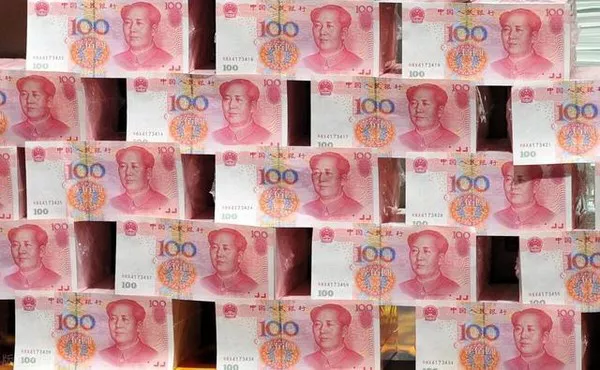In the dynamic world of international finance, understanding currency exchange rates is crucial for individuals and businesses engaged in global transactions. The Renminbi (RMB), the official currency of the People’s Republic of China, is a key player in the global economy. Investors and traders often seek to comprehend the value of the RMB against other currencies, and in this article, we delve into the specific exchange rate of 100 RMB to Malaysian Ringgit (MYR). By examining the factors influencing this exchange rate, its historical trends, and the potential implications, readers can gain valuable insights into the current state of the RMB-MYR relationship.
The Current Exchange Rate: 100 RMB to MYR
As of the latest data, the exchange rate of 1 yuan to ringgit is 0.65. This figure represents that 100 yuan can be exchanged for 65 Malaysian ringgit. It is important to recognize that exchange rates continue to fluctuate due to various economic, political and global factors.
Factors Influencing Exchange Rates
Economic Indicators:
Economic indicators play a pivotal role in determining exchange rates. Key factors include GDP growth, inflation rates, and employment figures. A robust Chinese economy may strengthen the RMB, affecting its exchange rate with the MYR.
Interest Rates:
Central banks’ decisions on interest rates can significantly impact exchange rates. Higher interest rates in China may attract foreign capital, boosting demand for the RMB and influencing its exchange rate against the MYR.
Trade Balances:
The trade balance between China and Malaysia is a crucial determinant of their currency exchange rates. A trade surplus for China, indicating higher exports than imports, can contribute to a stronger RMB relative to the MYR.
Political Stability:
Political stability fosters investor confidence and can positively influence a currency’s value. A stable political environment in China may attract foreign investment, impacting the RMB’s exchange rate.
Global Events:
Geopolitical events, such as trade tensions, economic sanctions, or global crises, can have immediate effects on exchange rates. The interconnected nature of the global economy means that events in one region can reverberate across currencies worldwide.
Historical Trends: A Glimpse Into the Past
To gain a comprehensive understanding of the current RMB to MYR exchange rate, it is crucial to explore historical trends. Over the past decade, the RMB has undergone significant changes, transitioning from a tightly controlled currency to one with greater flexibility. The following key events have influenced the historical trends of the RMB to MYR exchange rate:
Yuan Internationalization:
China’s efforts to internationalize the Yuan, the primary unit of the RMB, have contributed to its increased use in global trade. This internationalization has implications for the RMB’s value against other currencies, including the MYR.
Currency Pegging:
Historically, China maintained a fixed exchange rate system, pegging the RMB to the U.S. Dollar. However, in recent years, China has allowed the RMB to float within a certain range, enabling market forces to have a more direct impact on its value.
Bilateral Relations:
The diplomatic and economic relations between China and Malaysia have also influenced the historical exchange rate trends. Trade agreements, political developments, and collaborative initiatives can contribute to fluctuations in the RMB to MYR exchange rate.
Global Financial Crises:
Events such as the 2008 global financial crisis had a profound impact on currency exchange rates worldwide. Understanding how the RMB and MYR reacted during such crises provides insights into their resilience and stability.
See Also:Current RMB Exchange Rate: What is RMB to Birr
Potential Implications for Stakeholders
For Investors:
Investors involved in cross-border transactions or those with portfolios that include Chinese and Malaysian assets must closely monitor the RMB to MYR exchange rate. Fluctuations can impact the returns on investments and the overall performance of diversified portfolios.
For Importers and Exporters:
Businesses engaged in international trade between China and Malaysia need to consider the exchange rate when pricing goods and services. A favorable exchange rate can enhance profit margins for exporters, while importers may face increased costs during periods of currency depreciation.
For Tourists and Travelers:
Individuals planning trips between China and Malaysia should be mindful of the RMB to MYR exchange rate. It influences the purchasing power of travelers and can affect the cost of accommodation, meals, and other expenses.
For Central Banks and Governments:
The central banks of both China and Malaysia play a vital role in maintaining economic stability. Currency policies and interventions may be employed to manage exchange rate volatility and ensure the competitiveness of their respective economies.
Conclusion: Navigating the Currency Landscape
In conclusion, the exchange rate of 100 RMB to MYR is a critical metric that reflects the economic dynamics between China and Malaysia. By understanding the factors influencing this exchange rate, examining historical trends, and considering the implications for various stakeholders, individuals and businesses can make informed decisions in the ever-evolving landscape of international finance. As the global economy continues to interconnect, the RMB to MYR exchange rate will remain a focal point for those seeking to navigate the complexities of cross-border transactions and investments. Stay informed, stay vigilant, and adapt to the dynamic nature of currency markets for a prosperous financial future.
Related Topics:
Current RMB Exchange Rate: What Is Yuan to Baht?
Current RMB Exchange Rate: What is Yuan to Canadian Dollar?
Current RMB Exchange Rate: What is Yuan to Indonesian Rupiah

























